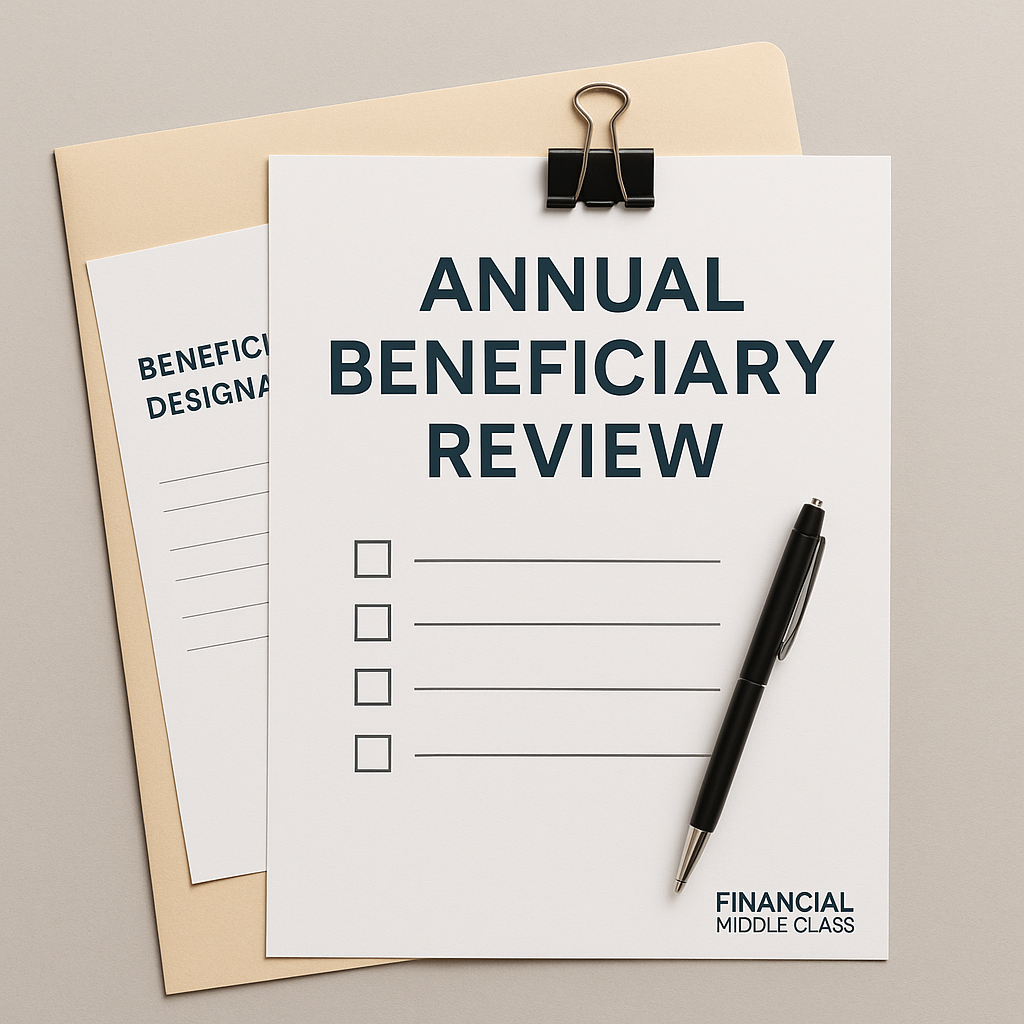Why this matters (more than your will)
A once-a-year habit that keeps your intentions aligned with your paperwork—and your family out of avoidable messes.
For a lot of assets, the beneficiary form beats your will. Retirement plans (401(k)/403(b)/457, IRAs), HSAs, life insurance, and many taxable accounts transfer by the designation on file—outside probate. If your ex is still listed from ten years ago, the institution will pay the ex. Not because they’re cruel, but because the contract says so. Your will doesn’t override that contract. Courts have backed this up repeatedly: when a worker died without updating his retirement plan form post-divorce—even though the divorce decree said the ex waived benefits—the plan paid the ex because administrators must follow the plan documents and the last signed designation.
In another case, a state law tried to automatically cut ex-spouses off at divorce. Federal ERISA rules still required paying the ex, because ERISA preempts conflicting state statutes.
And for federal employee life insurance, the Supreme Court held that federal law preempts a state “redirect” rule—the result: the ex-spouse kept the payout because she was still the named beneficiary.
Bottom line: the form on file wins. Update it.
What to review (and where)
Do a quick lap through your accounts:
- Workplace plans: 401(k)/403(b)/457 (including old jobs you left behind)
- Traditional & Roth IRAs
- HSA (yes, HSAs have beneficiaries)
- Life insurance (individual policies and group life at work)
- Brokerage and bank accounts that allow direct transfers at death
- Pensions, annuities, deferred compensation
Log in to each portal or email HR/custodian: “Please send me my current beneficiary designations and the link to update online.”
Plain-English definitions you’ll actually use
TOD (Transfer-on-Death) applies to brokerage/investment accounts. When you die, the securities transfer directly to the person(s) you named—outside probate—based on the most recent TOD instruction on file. Most states have adopted a version of the Uniform TOD Securities Registration Act; regulators highlight TOD as a way to simplify post-death transfers.
POD (Payable-on-Death) applies to bank accounts (checking, savings, CDs). At death, the bank pays the balance directly to the named POD beneficiary(ies), again outside probate, per the current form on file.
Both TOD and POD keep money out of the court line and into your family’s hands more quickly—but they’re unforgiving if you forget to update them, just like retirement and insurance beneficiary forms.
Primary, contingent, percentages—make it add up
Name at least one primary and one contingent beneficiary. Use legal names. Percentages must total 100%. If you’re splitting among kids or including a charity, document the exact split (e.g., 70/20/10). Contingents matter if a primary dies before you; skipping them often forces assets through probate.
Per stirpes vs. per capita (one paragraph you’ll actually use)
- Per stirpes: if your child passes before you, their share passes to their children.
- Per capita: if someone in that generation is gone, their share gets re-divided among the survivors at that level.
If your goal is “my kids or, if one is gone, their kids,” choose per stirpes when available.
Life events that demand an immediate update
Don’t wait for January if any of these happen: marriage or divorce, birth/adoption, death in the family, a new job/rollover, a new policy, moving into or out of a community-property state, or creating a new trust.
This is exactly where people get burned. Someone divorces, assumes the decree changed everything, never updates the beneficiary, and their family learns the hard way that plan documents control the payout. Another person relies on a state rule that supposedly revokes an ex’s rights at divorce—but ERISA or federal benefits law overrides it. The ex still gets paid. Paperwork wins.
Guardrails for common edge cases
- Minors: don’t leave large sums outright. Use a custodian (UTMA/UGMA) or a trust that names a responsible adult and protects the money.
- Special-needs beneficiaries: consider a Special Needs Trust to preserve benefits.
- Workplace plans & spouses: many ERISA plans require written spousal consent to name a non-spouse as primary.
- Trusts as beneficiaries: helpful for control/protection, but adds complexity—check custodian rules and coordinate with an estate attorney/CPA.
- Community-property states: spouses often have rights in retirement assets; know your state’s rules before you get creative.
How to actually do it (click-by-click)
- Log in to each provider and search “beneficiary.” If you can’t find it, use secure message or call support.
- Confirm legal names, DOBs, relationships; enter percentages for primary and contingent; select per stirpes if offered.
- If required, complete spousal consent (e-signature or notarized).
- Submit and download the confirmation PDF (or screenshot the confirmation page).
- Save to a folder named “Beneficiaries — 2025.” Repeat for each account, including any TOD instruction for brokerage and POD for bank accounts. (Some brokerages and regulators offer clear guidance on how TOD works—worth a quick read while you’re there.)
Cleanup you’ve been avoiding (but should finish this week)
- Old 401(k)s: either consolidate via rollover or, at minimum, update beneficiaries today.
- Add TOD/POD to taxable brokerage and bank accounts to keep those dollars out of probate.
- Find lost policies: search your files and emails; if needed, call prior employers’ HR or check your state’s unclaimed-property site for unpaid benefits.
Paper trail wins
If it’s not saved, it didn’t happen. Keep a simple record: the confirmation PDFs, your filled checklist, and today’s date. Tell one trusted person where that folder lives. (A printed one-pager in your family binder doesn’t hurt.)
Mistakes to avoid
- Assuming your will controls (it often doesn’t)
- Forgetting a contingent
- Leaving minors outright
- Listing “my estate” (often slower and more expensive)
- Percentages not totaling 100%
- Not updating after divorce or a move between property regimes
Make it automatic
You’ve now got a checklist, a one-pager, and a calendar reminder. That’s the system. Fifteen focused minutes, once a year, to keep your intentions aligned with your paperwork. Quiet habit, big impact.
